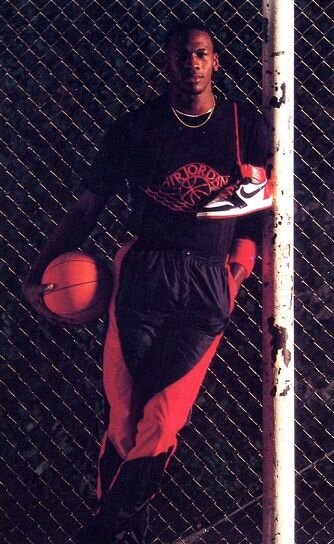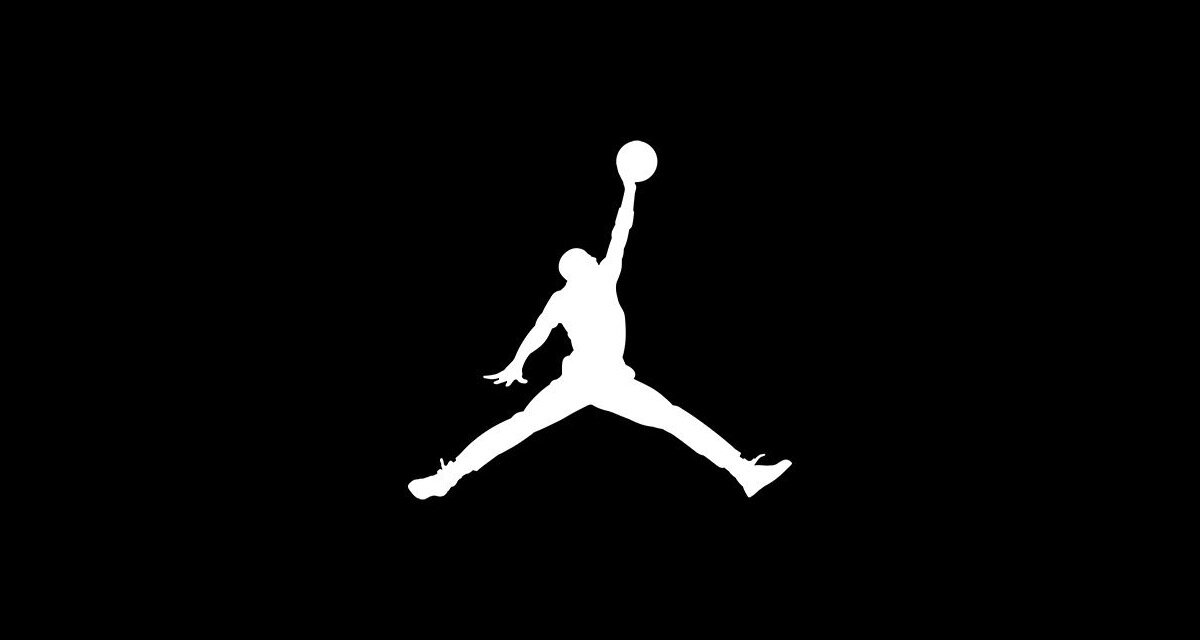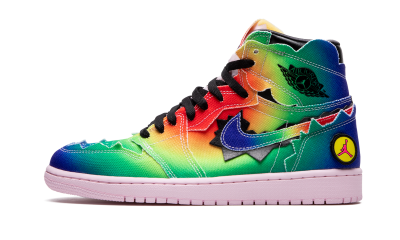The Rise of Nike Air Jordan
The Nike Air Jordan Story - The making of a mega-brand
In our latest Sport x Fashion Series, Aanu Omorodian settles in to tell the story of one of the most iconic brands of them all, Nike Air Jordan.
Before examining the iconic brand, it is pertinent that the individual who inspired it is discussed first.
Michael Jeffrey Jordan was born in Brooklyn, New York on February 17, 1963. While born on the East coast, Jordan was raised in the South. Having moved to North Carolina with his family in 1968, the future icon would attend high school and university in the Tar Heel state.
Jordan was not a natural talent from childhood. At 15, he failed to make his high school’s varsity basketball team. MJ shook himself off from this, worked out consistently and went on to star that year for the junior varsity team instead.
As it came to be.
With his 40-point games for JV drawing unexpected crowds, his progression to the varsity team the next year was inevitable. Jordan immediately became the best player in the varsity team after joining in 1976; as his sudden physical development interlinked with the already-present work ethic.
He averaged at least 25 points per game while on the team, illustrating his effectiveness on the ball while 12 rebounds showcased good athleticism as well. Jordan was an all-round basketball player by the time he left high-school and had also made time to play baseball and football.
Having been an all-American in high school, Jordan had scholarship offers from prestigious schools such as Duke, Syracuse and Virginia.
He instead opted to attend the University of North Carolina on a basketball scholarship in 1981. This would prove to be an inspired decision.
Jordan went on to win rookie of the year in his first year in university, scoring the game-winning points against Georgetown for the NCAA Championship. After averaging 13 points per game in his first year, MJ would average at least 19 points per game in years 2 and 3, winning all-American honours.
He also won the player of the year in his third year. Jordan left UNC as a junior in 1984 to declare for the NBA Draft, where he was selected by the Chicago Bulls 3rd overall in the first round.
Air Jordan - The Beginning of a mega brand
Nike wasn’t the dominant brand in the decade Michael Jordan was drafted. In basketball and the sneaker market in general, brands such as Adidas and Converse were more commonplace.
Adidas was the market leader in revenue, whilst stars such as Larry Bird and Magic Johnson wore Converse on the court.
Nike had built its reputation as a brand for track athletes, so signing then-college basketball star Jordan on a marketing deal was done with the goal of expanding their reach in basketball.
For Jordan, the deal came after an exceptional performance in the 1984 Olympic games. He had led the United States team to the gold medal, scoring the most points per game with 17.7.
MJ’s performance exposed his talent to a global audience, and the $500,000 per year 5-year deal recognized that. It was triple the value of any other NBA sneaker deal at the time and was further enhanced with royalties from sneaker sales.
The ‘Jumpman’ Logo - Most of you will know it.
The name ‘Air Jordan’ originated from Jordan’s agent, David Falk, who had presented a list of name ideas prior to the deal’s completion. Nike’s then-creative director, Peter Moore, designed the iconic ball-and-wings logo; finding inspiration from a child wearing wings on Moore’s flight home.
He also picked the now-iconic red, black and white colours for the sneakers. Three colours on a single pair of sneakers was unprecedented at the time.
Debut of ‘The Jordan’
Nike would like the public to believe that the Nike Air Jordan was banned by the NBA the first time Michael Jordan wore them on the court. In reality, the banned shoes were black and red Nike Air Ships. The Air Ships were Nike’s top-of-the-line basketball shoes in the early 1980s and were sold for $75 a pair.
Jordan wearing that colourway broke the now-abolished ‘uniformity of uniform’ rule; which required that all players wore sneakers that not only matched the team uniform but the sneakers of other teammates.
This was on October 18 1984, in a preseason game against the New York Knicks at Madison Square Garden.
The banned Air Ships were customized with ‘Air Jordan’ behind the sneakers, but MJ didn’t wear authentic Nike Air Jordan’s until November 17, 1984, in a regular-season game vs the Philadelphia 76ers.
Jordan’s Jordan’s were made to the letter of the law; with white and red, the major colours accompanied by a black swoosh and dark laces.
This colourway matched the Bulls all-white kit with red stripes, and would later be known as the ‘Chicago’ colourway.
As previously mentioned, Nike used the falsehood of the banned Jordan’s to their advantage.
The marketing campaign for the Air Jordan’s revolved around the supposed ban. Commercials framed the shoes as too hot for the NBA to handle, with the red and black Air Jordan’s being hidden by censor bars on television.
One commercial had Jordan dribbling as a narrator stated: “On Oct. 15, Nike created a revolutionary new basketball shoe. On Oct. 18, the NBA threw them out of the game. Fortunately, the NBA can’t keep you from wearing them. Air Jordan’s. From Nike”.
Another said, “Who said man wasn’t meant to fly?”. The clever marketing ensured the brand ‘Air Jordan’ became ubiquitous to the public before it was even released.
Nike Air Jordan’s as a fashion statement
Jordan would intermittently wear his brand of shoes during his rookie season in the red and white colourway, but famously wore the red and black colourway – now known as the ‘banned’ edition – during the 1985 NBA dunk contest in February of that year, classily matching the shoes with minimalist gold chains as he finished runner-up that year.
Nike officially released the first Air Jordan sneakers to the public on April 1, 1985 at a retail price of $65.
Nike expected to sell 100,000 pairs by the end of the year.
The Air Jordan 1s sold 450,000 pairs in the first month.
Nike expected sales to hit $3 million by the fourth year of Jordan’s contract, sales totalled about $30 million in test markets alone after a month.
After the first year of its release, Air Jordan had brought in revenue of $126 million. Nike had only brought in $65 million in total revenue the year before.
Sales clearly exceeded expectations. The Air Jordan 1s appealed to demographics that weren’t accounted for.
Nike had intended the market to be African American teens but in the hype, the Jordans became desired by people of all ages, race and class.
The sneakers were light on the feet, flexible and fashionable. Jordan winning NBA rookie of the year in 1985 certainly didn’t hurt brand popularity either.
His talent and confident personality helped sell the shoes as interlinked with success and trendy fashion. Nike’s marketing of the NBA ‘banning’ the shoes also made them edgy and desirable.
Unboxing every Air Jordan sneaker released during Michael Jordan's incredible professional basketball career.
With the demand so high, measuring for oversupply was difficult. Nike ended up producing too many Jordan 1s.
The sneakers became an incessant feature on shelves in shoe stores, often at discounted prices. This led to its emergence as a fashion staple, as it was worn by everyone and began to be seen as timeless in a similar manner to the Converse all-stars. Nike's advertising prowess played no small part in the brand's early success.
The Air Jordan II was released the following year, and the Nike subsidiary has released a number pair of Jordan sneakers annually since its inception, with #36 being released on October 17, 2020. The iconic ‘Jumpman’ logo began appearing on Jordan IIIs, originating from a 1994 Life Magazine photo shoot for the Olympic games that year.
The shoot involved Jordan performing a mid-air ballet move from a standing jump, and the rest, as they say, is history.
Growth of the Air Jordan Brand
The Jordan brand has played a huge part in Nike’s growth from underdog to the market leader in sportswear, especially in basketball.
Whilst Converse were previously the dominant force on the court in ‘80s, Nike now possess 86% market share of the performance basketball market as of 2020. 77% of NBA players wore either Nike or Jordan shoes during ‘19/20 season.
Whilst brands like Reebok earn lower revenue than they did a decade ago, Nike earned $40 billion in revenue in their last financial year. This was 60% more than Adidas in the same period. Jordan himself has earned an estimated $1.3 billion from the collaboration with Nike, a successful partnership for both parties as his on-the-court success continued to propel the brand through the ‘90s.
5x NBA Most Valuable Player and 6 NBA Championships speak for themselves. Jordan was so dominant, he even won defensive player of the year in 1988.
When Jordan retired (the final time) in 2003, other rising stars such as Carmelo Anthony and Blake Griffin began getting sponsored by the Jordan brand. Schools also began getting Air Jordan sponsorships, leading to increased popularity due to more variety in the sneaker colours. Air Jordan eventually expanded into the WNBA later in 21st century.
Air Jordans retail and resell at higher prices than the average basketball sneaker.
The brand’s growth hasn’t stifled evolution. The 2000s saw Air Jordan begin producing performance sneakers for athletes in other sports such as golf, tennis, boxing and baseball. Jordan has collaborated with various brands and entertainers.
The first ever was in 2005 with UNDFTD, an international high-end sneaker store. The next was one with Eminem in the same year. Jordan has since collaborated with Levi’s, global artist Drake and his OVO (October’s Very Own) fashion line, Macklemore etc. The brand also hasn’t been afraid to fuse various Jordans together with other Nike brands, with fusions with the Air Force 1s beginning in 2010.
The PSG x Air Jordan Partnership
The Nike-owned brand has expanded even further in recent years, entering into football apparel in 2018 in the form of a three-year deal with French club Paris Saint-Germain to produce training, high-performance and lifestyle attire for the Ligue 1 champions.
The attire includes the Jordan Brand featuring on the PSG kits during UEFA Champions League games, as well as bespoke PSG Air Jordan sneakers. This collaboration has proven successful, with US sales of PSG jerseys increasing 470% a year after the agreement . PSG generated 60million euros in sales from the partnership in 2019. These events have led to the deal between the two parties being extended till 2022.
Air Jordan is now a $10 billion brand, earning revenue of $3.1 billion as of the 2019 fiscal year. With its expanding global influence, the Jumpman may soon be commonplace in every sport and in every household.
Considering the cultural influence of MJ and his eponymous brand, it’s crazy to read that Jordan contemplated skipping that Nike meeting in 1984.






